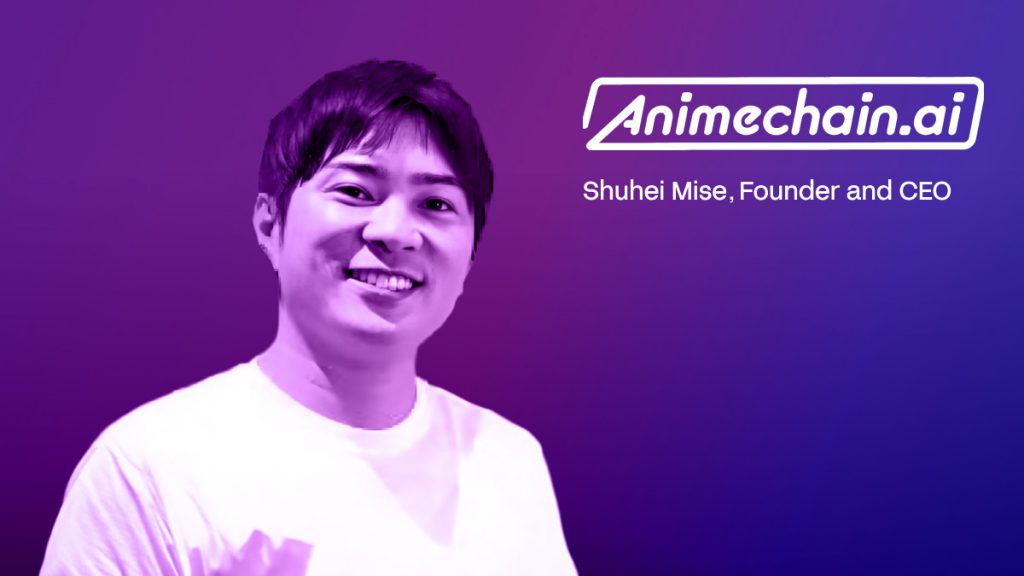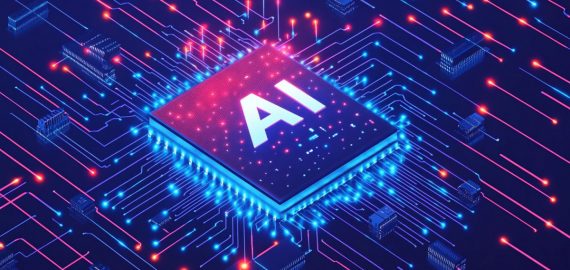Decentralizing Imagination: AnimeChain’s Quest to Empower Fans and Creators in a Tokenized Anime Ecosystem


In Brief
Shuhei Mise, CEO of AnimeChain.ai, discusses the integration of blockchain technology with the anime industry, highlighting the future of content creation and AI’s role in anime production.

In this interview, Shuhei Mise, the Founder and CEO of AnimeChain.ai, shares his journey from traditional finance to the cutting-edge world of Web3 and anime. With a passion for integrating blockchain technology with Japan’s renowned anime industry, Mise offers a unique perspective on the future of content creation, fan engagement, and the role of AI in revolutionizing anime production.
Can you share your journey to Web3?
I started in Web3 in 2017 when I encountered Bitcoin and thought it would change the world. At that time, I had been working for a traditional financial institution for more than 10 years. I decided to resign and joined the Japanese exchange bitFlyer in 2018, handling private blockchain sales. However, I felt that private blockchain was not meaningful, so I started a DeFi project in 2019.
After six months, I joined Turingum, a Web3 consulting company, where I consulted several companies, especially in the gaming area. I thought gaming would be an ideal way of using crypto as it’s easy to create UTTs. I did that for about two to three years, then sold the company to a listing company in Japan called Cushin.
After selling the company, I resigned as CEO and became an advisor for one year. During that time, I met with AnimeChain and thought it could change the world. I believed it was important to integrate the anime business with crypto. I resigned from the advisor role in May 2024 and am currently focusing solely on this project.
What is the current state of blockchain and crypto adoption in Japan?
I believe that Japan was one of the earliest countries to create crypto regulations in 2014. However, because the regulations were strict, adoption didn’t proceed well. I think Japan is currently behind in the crypto area compared to the U.S. or other countries. That said, Japan is very good at creating IPs, games, and other content that could fit well with crypto, especially in the IP area. This could be a hot area at the moment, but overall, Japan is still lagging behind.
Why do you think there is a need to use Web3 technologies for anime production?
Crypto requires liquidity for trading and needs a certain number of people who share the same values or enthusiasm. Anime could be a product that easily allows people to share values with others. Additionally, the anime production industry is currently facing a resource shortage, and there must be something to support their daily work.
AI could be a solution, but since AI uses legacy data, there need to be rules on how to use it. It’s better to have an ecosystem to distribute revenues to the original IP owners or those who provided data to the AI. Blockchain can serve as a perfect database for managing the data used by AI, benefiting both the anime industry and AI development. Without new data, AI won’t evolve, so this system can help continuously obtain data from users and creators.
How do you plan to revolutionize character design in anime production using generative AI?
This is a difficult question to answer as we don’t currently plan to use AI for character design. Many people oppose using AI to create characters, believing it steals ideas from others. For now, it’s better to use AI as a supporting tool in the anime creation process. For example, AI can help with in-betweening, which is filling in frames between key animations.
AI can also support background creation, which doesn’t influence the quality of the anime as much as character design. In the future, we might be able to consider using AI for character design, but for now, we’re focusing on supporting roles for AI in anime production.
Do you think famous anime producers like Studio Ghibli with Hayao Miyazaki can be open to this new technology, or will they be more conservative on AI?
I think it would be very difficult for Director Hayao Miyazaki to use AI since the value of his work comes from everything being done manually. He doesn’t even use 3D images or CG at all, which is part of the beauty of his work.
However, other famous directors like Makoto Shinkai might be more open to using AI. Shinkai focuses on creating high-quality, detailed images, which AI could potentially help with if trained well enough. It really depends on the individual creator, their style, and what they want to express in their work.
Do you think GPU technology can somehow be used for anime creation?
In terms of GPU, it’s definitely possible for the future, although it might be difficult to implement right now. To use AI in anime, you need to have the AI engine, the foundation model, and the GPU in the same place, which is a limitation of current technology. If we can break down the GPU resources, it might be possible, but it will likely take two to three years for the technology to develop further.
In terms of creating new IPs, which is another interpretation of your question, that’s something we’d like to bring into the AnimeChain ecosystem. We want to create an infrastructure that allows for the continuous creation of new IPs rather than relying on just one.
Does AnimeChain face any challenges in terms of rights clearance for data usage in AI models or any other challenges?
Yes, there are many challenges in collecting IP-related data and getting approval for its use. While it’s currently legal to use IP for AI training, it’s unclear if you can use it for business purposes. We’re working on creating a system to distribute revenues or profits to data providers, even if it’s not a large amount. This is important for sustainably obtaining data from IP holders. Once we can demonstrate that this system works, larger IP providers might be willing to contribute data to our ecosystem.
Can you elaborate on the main features of AnimeChain that differentiate it from other generative AI services?
We’re focusing more on creators and providing tools that allow them to easily create new content using AI. Other projects might focus more on the IP itself or the AI technology, but we believe AI is just a tool for people.
We’re providing tools specifically for anime creators to use AI and create new anime or IPs. Our main differentiation is our focus on the creator’s mindset, encouraging them to create new things with AI rather than letting AI create on its own.
How do you envision the future of collaboration between human creators and AI in anime production?
In the future, there are many ways creators and AI can collaborate effectively. However, many creators currently fear that AI will take over their work, which is something we need to address. If creators can use AI as a tool, they can produce new types of anime or art, similar to how digital art opens up new creative possibilities.
We expect AI to enable new products, new art forms, and new types of anime. While AGI might be able to create art independently in the future, humans and creators should always be the ones providing new values using these technologies. The subject must always be the creators or artists, not the AI.
Do you think your technology can help anime be adopted more widely?
Definitely, while anime is already famous worldwide, there’s still room for growth. Our technology can help localize anime products and facilitate collaborations with artists or directors from other countries.
AI can support the localization process, including adapting scenarios or stories to appeal more to certain countries or cultures. It can also help modify details to account for different cultural or religious contexts, all at a minimal cost. This opens up new possibilities for expanding anime culture globally.
Can you share what is on the roadmap for AnimeChain?
Our future plan is to become the center of exchanging values between creators and anime fans. By using AI, we can reduce the cost of creating and modifying anime, allowing for more interaction with fans. For example, fans might be able to vote on story directions, and we could adjust the anime based on those votes.
This kind of interaction could be facilitated globally through the use of tokens. We also envision more freedom in using IPs, potentially allowing for fan creations that are currently restricted due to copyright issues. We’re looking at creating more decentralized IPs, similar to how Hatsune Miku has been used by many creators for music and illustrations.
This could lead to a new way of interaction between fans and creators, where fans can easily become creators themselves. Crypto will be crucial in enabling these new communities and art forms, especially when dealing with small transactions that are difficult to handle with fiat currency.
Disclaimer
In line with the Trust Project guidelines, please note that the information provided on this page is not intended to be and should not be interpreted as legal, tax, investment, financial, or any other form of advice. It is important to only invest what you can afford to lose and to seek independent financial advice if you have any doubts. For further information, we suggest referring to the terms and conditions as well as the help and support pages provided by the issuer or advertiser. MetaversePost is committed to accurate, unbiased reporting, but market conditions are subject to change without notice.
About The Author
Victoria is a writer on a variety of technology topics including Web3.0, AI and cryptocurrencies. Her extensive experience allows her to write insightful articles for the wider audience.
More articles

Victoria is a writer on a variety of technology topics including Web3.0, AI and cryptocurrencies. Her extensive experience allows her to write insightful articles for the wider audience.

















































